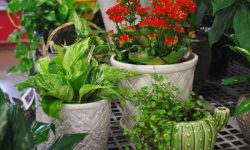
Digging Into Soil: Understanding Soil Health and Composition
We're sorry, but all tickets sales have ended because the event is expired.
Event Phone:
507-388-4877
Mycorrhizae, soil texture, water retention…learn the basics on soil health and composition to assist in deciding on what plants will thrive in your soil and how to improve soil health!

LAWN DORMANCY AND WATER CONSERVATION.
IT’S NOT DEAD. IT’S DORMANT.
It’s not a pretty picture, but it’s an important message. If you see brown turf grass like this *image*, don’t worry. What we should worry about is what drought means for the water supply and our ground water level.
We’re happy to give you good news!
The same as dormancy during the winter months, turf grass goes dormant to survive drought conditions to conserve nutrients and energy. The grass won’t die unless there is a very long period of drought and extreme heat. We understand a lawn can be an important space for play and relaxation, and you don’t want your grass to die. To prevent death with as little water as possible, water turf grass with ½ inch every two weeks. This ½ inch of water will not green up the grass but will keep the crowns alive.
The responsibility of landowners is to conserve water during drought because the same water that is used for watering lawns is the same water all families drink. Turf grass doesn’t need the water, but we certainly do. In addition to the importance of conserving water for human consumption, reduced manual watering will save time and money.
Another issue during drought is the mistiming of watering during heat and drought. The mid-afternoon sun and wind evaporation negate watering efforts. That’s literally pouring money down the drain. When watering turf, water between 6:00 a.m. to 8:00 a.m. to avoid water loss.
After a drought period, depending on the variety of grass, it should green up within 3 to 4 weeks if accumulative rain is 1 inch a week.
What about water conservation for gardens?
The answer to that question is about perceived value and can be subjective. Watering your vegetables, fruits, and newly installed landscape plants is often viewed as important as these are valuable resources and adds biodiversity to the area that turf grass does not provide.
Let’s turn the problem into a solution!
If you’d also like to conserve water and still enjoy a garden, increase the square footage of hearty perennial landscape plants or Xeriscaping, a technical name for planting for non-irrigation gardens. For example, native plants have adapted to an area and can handle periods of drought because of their very long tap roots. There are many other plants, once mature, that create a hands-off landscape and will make gardening more affordable!
Use it or lose it.
Harvesting rainwater in rain barrels and cisterns can trap water for later use or create a swale or basin in your yard to direct rainwater to specific areas to make rain the primary irrigation method and reduce manual watering. Depending on the harvesting method, 1000s of gallons of water can be utilized from one rain event!
For ideas on plants to add to your landscape, read Top 8 Tough As Nails Perennials ( that also are pollinator-friendly! ) and our list of drought-tolerant plants.

Annual Flower & Plant Care
-
Annual Flower & Plant Care
July 25, 2019
5:30 pm - 6:30 pm
We're sorry, but all tickets sales have ended because the event is expired.
Event Phone:
507-388-4877
Get detailed care instructions for multiple varieties of annual flowers and plants!

30 min talk – Care of Houseplants
-
September 19, 2018
1:00 pm - 1:30 pm
We're sorry, but all tickets sales have ended because the event is expired.
Event Phone:
507-388-4877
Explore the care and feeding of houseplants with Kris, the ONE to talk to about houseplants!




